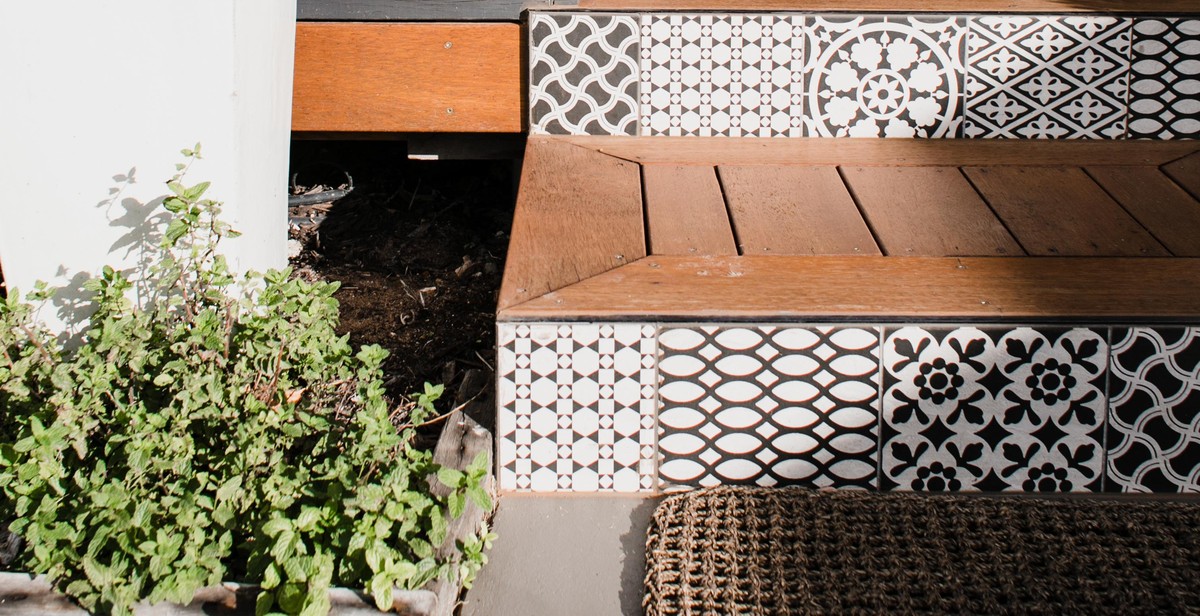Introduction: How to Build a DIY Vertical Wall Garden with Wire Mesh
A vertical wall garden is an innovative way to grow plants in a limited space. It is a perfect solution for those who love gardening but do not have enough outdoor space to grow plants. A vertical wall garden can be built using various materials, but wire mesh is an excellent option as it is affordable, easy to find, and durable. In this article, we will guide you on how to build a DIY vertical wall garden with wire mesh.
What is a Vertical Wall Garden?
A vertical wall garden is a type of garden that is grown vertically on a wall or fence. It is also known as a living wall or green wall. This type of garden is perfect for those who have limited space and want to grow plants vertically. Vertical wall gardens are not only space-efficient but also aesthetically pleasing. They can be created indoors or outdoors and can be used to grow a variety of plants, including herbs, vegetables, and flowers.
Building a vertical wall garden with wire mesh is an easy and affordable way to create a beautiful and functional garden. In the following sections, we will provide step-by-step instructions on how to build a DIY vertical wall garden with wire mesh.

Benefits of Vertical Wall Gardens
A vertical wall garden is a type of garden that is built to grow plants vertically on a wall. This type of garden has become increasingly popular in recent years due to its many benefits. Here are some of the benefits of vertical wall gardens:
Space Saving
One of the main benefits of vertical wall gardens is that they are space-saving. If you live in an apartment or have limited outdoor space, a vertical wall garden can be a great way to grow plants without taking up too much space. Vertical wall gardens can be built on walls, fences, or even on balconies, making them ideal for small spaces.
Improved Air Quality
Vertical wall gardens can also improve air quality. Plants absorb carbon dioxide and release oxygen, which means that having a vertical wall garden in your home or office can help to purify the air and make it healthier to breathe. In addition, plants can also help to reduce noise pollution, making your environment more peaceful and relaxing.
Reduced Risk of Pests and Diseases
Another benefit of vertical wall gardens is that they can help to reduce the risk of pests and diseases. When plants are grown in the ground, they are more susceptible to pests and diseases that live in the soil. However, when plants are grown vertically, they are less likely to come into contact with these pests and diseases, which means that they are less likely to get sick or die.
Easy Access for Maintenance
Vertical wall gardens are also easy to maintain. When plants are grown in the ground, it can be difficult to access them for watering, pruning, and other maintenance tasks. However, when plants are grown vertically, they are easier to reach and maintain. This means that you can keep your plants healthy and looking great with minimal effort.
| Benefits of Vertical Wall Gardens |
|---|
| Space Saving |
| Improved Air Quality |
| Reduced Risk of Pests and Diseases |
| Easy Access for Maintenance |
Overall, vertical wall gardens are a great way to grow plants in a small space while enjoying the many benefits of gardening. Whether you want to improve air quality, reduce the risk of pests and diseases, or simply enjoy the beauty of plants growing on your wall, a vertical wall garden is a great option.

Materials Needed
Building a DIY vertical wall garden with wire mesh requires the following materials:
| Material | Quantity |
|---|---|
| Wire Mesh Panels | 3 |
| Wire Cutters | 1 |
| Pliers | 1 |
| Screws and Nails | As needed |
| Drill | 1 |
| Potting Soil | As needed |
| Plants | As needed |
Wire Mesh Panels
The wire mesh panels are the main component of the vertical wall garden. You will need three panels to create a sturdy structure. It is important to choose a panel that is strong enough to hold the weight of the soil and plants. The mesh size should be small enough to prevent soil from falling through, but large enough to allow for good drainage.
Wire Cutters and Pliers
Wire cutters and pliers are necessary for cutting and bending the wire mesh panels to fit the desired size and shape. These tools will also be used to secure the panels together and attach them to the wall.
Screws and Nails
Screws and nails are used to attach the wire mesh panels to the wall and to secure them together. The type and size of screws and nails will depend on the material of the wall and the weight of the structure.
Drill
A drill is needed to make pilot holes for screws and nails. It is important to use the correct drill bit size to avoid damaging the wall or the wire mesh panels.
Potting Soil
Potting soil is used to fill the wire mesh panels and provide a growing medium for the plants. It is important to choose a high-quality potting soil that is rich in nutrients and has good drainage.
Plants
The type and number of plants will depend on the size of the wire mesh panels and the amount of sunlight the wall garden will receive. It is important to choose plants that are suitable for vertical growing and can thrive in the growing conditions provided by the wall garden.

Step-by-Step Guide: How to Build a DIY Vertical Wall Garden with Wire Mesh
Step 1: Measure and Cut the Wire Mesh Panels
Measure the desired size of your vertical wall garden and cut the wire mesh panels to fit. Use wire cutters to trim the edges of the mesh panels to the required size.
Step 2: Create a Frame
Create a frame for your vertical wall garden using wood or PVC pipes. Cut the wood or PVC pipes to the desired length and use screws or nails to attach them together. Make sure the frame is sturdy enough to hold the weight of the wire mesh panels and the plants.
Step 3: Attach the Mesh Panels to the Frame
Attach the wire mesh panels to the frame using zip ties or wire. Secure the mesh panels tightly to the frame to prevent them from sagging or falling off. Make sure the mesh panels are evenly spaced apart to allow enough room for the plants to grow.
Step 4: Add Potting Soil and Plants
Add potting soil to the wire mesh panels, filling them up to about 2/3 of the way. Choose plants that are suitable for vertical gardening such as succulents, herbs, or small flowers. Plant the selected plants into the soil, making sure they are evenly spaced apart.
You can also add a layer of mulch on top of the soil to help retain moisture and prevent weeds from growing.
Water your new vertical wall garden regularly, making sure the soil stays moist. Hang your vertical wall garden on a sturdy wall or fence, making sure it gets enough sunlight for the plants to grow.
Congratulations! You have successfully built your own DIY vertical wall garden with wire mesh.

Maintenance and Care for your DIY Vertical Wall Garden with Wire Mesh
Now that you have successfully built your DIY vertical wall garden with wire mesh, it is important to know how to maintain and care for it. Proper maintenance will ensure that your plants thrive and your garden remains healthy and beautiful for a long time.
Watering
Watering your plants is essential for their growth and survival. It is important to water your vertical garden regularly, especially during hot and dry weather. However, overwatering can be harmful to your plants. It is recommended to water your plants once or twice a week, depending on the weather conditions and the type of plants you have. Make sure to check the soil moisture level before watering. If the soil is dry, it is time to water your plants.
Fertilizing
Fertilizing your plants is important for their growth and health. You can use organic fertilizers or compost to provide your plants with the necessary nutrients. It is recommended to fertilize your plants once a month during the growing season. However, be careful not to over-fertilize your plants as it can be harmful to them.
Pruning
Pruning your plants is essential for their growth and shape. It is recommended to prune your plants regularly to remove dead or damaged leaves, branches, and flowers. This will help your plants to grow stronger and healthier. You can also prune your plants to maintain their shape and size. Be careful not to prune too much as it can harm your plants.
Pest Control
Pest control is important to keep your plants healthy and free from pests and diseases. You can use natural pesticides or insecticides to control pests and diseases. It is also recommended to inspect your plants regularly for any signs of pests or diseases. Early detection and treatment can prevent the spread of pests and diseases to other plants in your garden.
| Practice | Frequency |
|---|---|
| Watering | Once or twice a week depending on weather conditions and plant type |
| Fertilizing | Once a month during the growing season |
| Pruning | Regularly to remove dead or damaged leaves, branches, and flowers |
| Pest Control | Inspect regularly for signs of pests and diseases and use natural pesticides or insecticides |

Conclusion
Building a DIY vertical wall garden with wire mesh is a fun and rewarding project that can bring life and beauty to any space. With some basic tools and materials, you can create a stunning living wall that will not only look great but also provide fresh herbs, vegetables, and flowers for your home or office.
Tips for Success
- Choose the right plants for your space and lighting conditions.
- Make sure your wire mesh is sturdy and secure before hanging your plants.
- Water your plants regularly and monitor their growth to ensure they are thriving.
- Consider adding a drip irrigation system to make watering easier.
- Be creative! Experiment with different plant combinations and arrangements to create a unique and personalized living wall.
Benefits of a Vertical Wall Garden
Vertical wall gardens offer many benefits beyond their aesthetic appeal. They can improve air quality, reduce stress, and even lower energy costs by insulating buildings. Plus, growing your own herbs and vegetables is a great way to save money and eat healthier.
Get Started Today
Now that you know how to build a DIY vertical wall garden with wire mesh, it’s time to get started! With a little creativity and some basic gardening skills, you can create a beautiful and functional living wall that will enhance any space.
| Tools and Materials | Cost |
|---|---|
| Wire mesh | $20-$30 |
| Wire cutters | $10-$20 |
| Plants | $20-$50 |
| Soil | $10-$20 |
